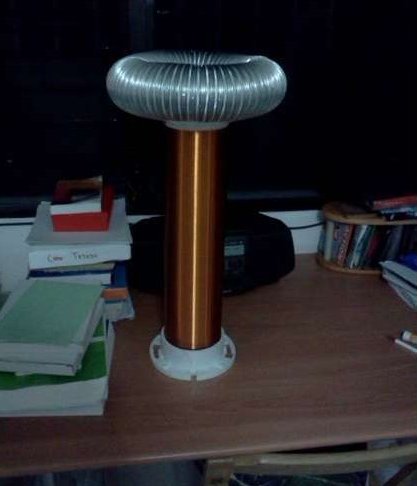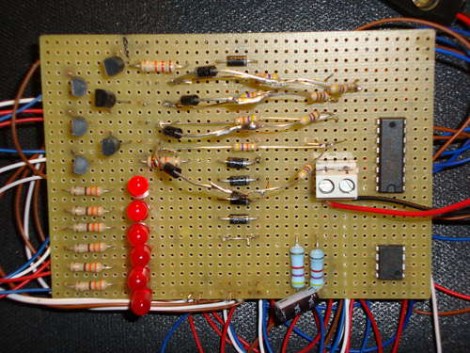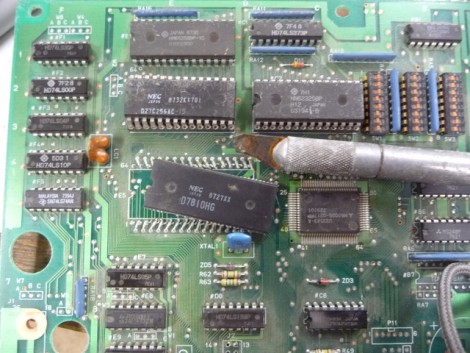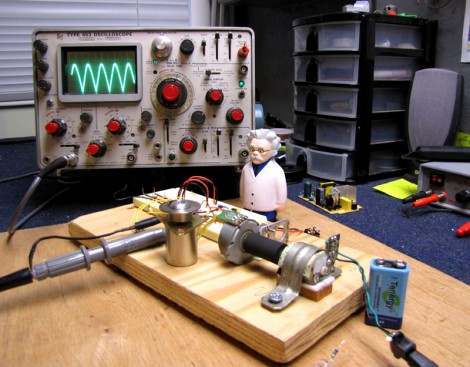
Tesla Coils are always a blast to see and are relativity simple to build. While there are plenty of sites on the subject, [Michael’s] newest instructable breaks building a solid state Tesla Coil down to 12 easy steps.
Items that should be familiar to anyone who has even looked at a Tesla Coil include PVC pipe, Aluminum ducting, and wire … lots of wire. The PVC pipe is cut to length and a flange is attached to help form a base. From there the pipe is wound with about ¾ of a pound of 30 AWG enameled wire, which takes some time by hand to make sure you don’t overlap or get space between the coils.
Aluminum ducting is then wrapped around the outside of a second flange. Some stovepipe wire is ran though the ducting and twisted to close up the 2 ends, and hot glue is used to attach the two ends together. The assembly is screwed to the top of the pipe now containing the secondary of the massive transformer. All that is left is to attach a primary, which is made out of a few turns of 16 AWG wire, and the control circuitry.
Join us after the break for a shocking video!
















